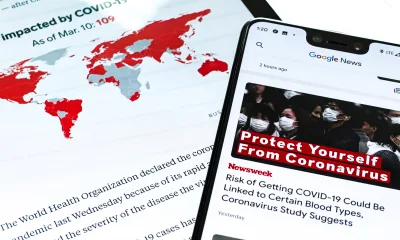Business
Crisis Communication Strategy for Organizations
Discover the importance of a crisis communication strategy for organizations. Learn key elements to effectively navigate through crises and preserve trust.

Are you prepared for a crisis? When unexpected challenges arise, organizations need a solid crisis communication strategy in place to effectively navigate through troubled waters. From natural disasters to product recalls, having a plan in place is crucial in maintaining trust with stakeholders and preserving reputation. In this article, we will explore the importance of crisis communication strategies for organizations and discuss key elements that should be included to ensure a smooth and effective response. Whether you’re a small business or a multinational corporation, understanding how to handle crises can make all the difference in successfully weathering the storm. So, let’s dive into the world of crisis communication strategies and discover how you can be prepared for whatever comes your way.
Crisis Communication Strategy for Organizations
In today’s fast-paced and interconnected world, organizations are constantly faced with the potential for crises. Whether it’s a natural disaster, a product recall, or a public relations nightmare, effective crisis communication is crucial to protect an organization’s reputation and minimize damage.

This image is property of images.unsplash.com.
Understanding Crisis Communication
Crisis communication refers to the strategic management of communication during a crisis or emergency situation. It involves promptly and effectively delivering information to stakeholders, both internal and external, to maintain trust, credibility, and transparency.
During a crisis, emotions run high, and misinformation can spread rapidly. A well-developed crisis communication strategy enables organizations to provide accurate and timely information, address concerns, and navigate through challenging times with professionalism and accountability.
Importance of Crisis Communication Strategy
A crisis can strike at any moment, and organizations that are unprepared may find themselves in a chaotic and reactive state. A crisis communication strategy is paramount for several reasons:
-
Reputation Management: During a crisis, an organization’s reputation is at stake. Effective communication helps to control narratives, dispel rumors, and shape public perception in a positive light.
-
Maintaining Stakeholder Trust: Open and transparent communication is vital to maintaining trust with stakeholders such as customers, employees, suppliers, and the community. A well-executed crisis communication strategy can help reassure stakeholders that the organization is taking responsibility and working towards a resolution.
-
Legal and Regulatory Compliance: In certain situations, organizations may have legal and regulatory obligations to communicate specific information during a crisis. A comprehensive crisis communication strategy ensures compliance with these requirements.
-
Business Continuity: By quickly and effectively responding to a crisis, organizations can minimize disruption to their operations and maintain a level of functionality that allows them to continue serving their customers and fulfilling their mission.

This image is property of images.unsplash.com.
Key Elements of a Crisis Communication Strategy
A comprehensive crisis communication strategy should include the following key elements:
Preparation and Planning Stage
The first step in developing a crisis communication strategy is to set up a dedicated crisis communication team. This team should include representatives from various departments, such as public relations, legal, operations, and human resources. The team will be responsible for creating and implementing the crisis communication plan.
During the preparation and planning stage, the team should identify potential crisis scenarios that could impact the organization. It is important to consider both internal and external factors that could trigger a crisis. By proactively identifying potential crises, organizations can develop specific strategies to address each scenario.

This image is property of images.unsplash.com.
Identifying Potential Crisis Scenarios
To effectively identify potential crisis scenarios, organizations should conduct a thorough risk assessment. This assessment should evaluate internal and external threats and vulnerabilities, considering factors such as natural disasters, product failures, cyber-attacks, accidents, and unethical behavior.
By understanding the potential risks, organizations can develop targeted crisis communication strategies that address the specific circumstances of each scenario.
Roles and Responsibilities
During a crisis, clear roles and responsibilities are crucial for effective communication. Each team member should have a defined role and be aware of their responsibilities.
The crisis communication team should establish an organizational hierarchy for decision-making, with designated spokesperson(s) who will serve as the official voice of the organization during the crisis. It is essential to ensure that these spokespersons are trained in crisis communication and media relations to effectively convey messages and maintain consistent messaging.

Effective Internal Communication
Internal communication plays a vital role in managing a crisis. Employees need to be informed and updated regularly to ensure their safety, dispel rumors, and keep morale high.
Organizations should establish multiple communication channels during a crisis, including email, intranet, and team meetings. It is essential that information is disseminated in a timely and clear manner, providing employees with guidance and instructions to navigate the crisis.
External Stakeholder Communication
While internal communication is crucial, organizations must also communicate with external stakeholders. These include customers, suppliers, investors, the media, and the general public.
Organizations should develop targeted messaging for each stakeholder group, addressing their specific concerns and needs. It is important to be proactive and transparent in sharing information while addressing any potential reputational risks.

Media Relations and Management
The media can play a significant role in shaping public perception during a crisis. Organizations should establish relationships with key media contacts before a crisis occurs to facilitate effective communication.
During a crisis, organizations must respond promptly to media inquiries, providing accurate and consistent information. It is essential to have a designated spokesperson who is trained in media relations and can handle inquiries professionally and effectively.
Social Media Communication
In today’s digital age, social media can have a profound impact on crisis communication. Organizations should actively monitor social media platforms, respond to inquiries or concerns, and correct misinformation.
Organizations should develop a social media policy that outlines guidelines for employees’ use of social media during a crisis. Clear communication about this policy will help employees understand their responsibilities and avoid sharing misleading information.
Monitoring and Evaluation
Once the crisis has been managed and communication efforts have taken place, it is critical to evaluate the effectiveness of the crisis communication strategy. This evaluation should include gathering feedback from stakeholders, reviewing media coverage, and assessing internal performance.
By conducting a thorough evaluation, organizations can identify areas for improvement and make necessary adjustments to their crisis communication strategy for future incidents.
In conclusion, a well-developed crisis communication strategy is essential for organizations to effectively manage crises, protect their reputation, and maintain stakeholder trust. By proactively planning, identifying potential scenarios, and executing clear and transparent communication, organizations can navigate through crises with professionalism and resilience.














Pingback: The Importance of Crisis Management Training in Business - Thought Leaders Ethos™
Pingback: Building and Maintaining Your Company's Reputation - Thought Leaders Ethos™